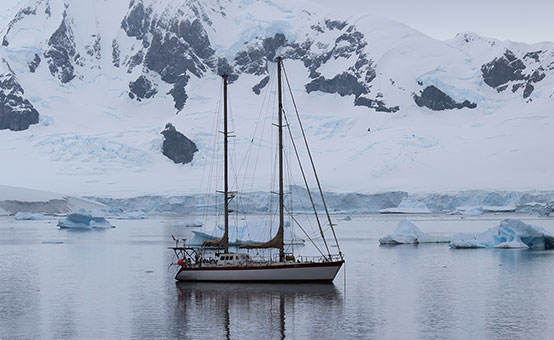
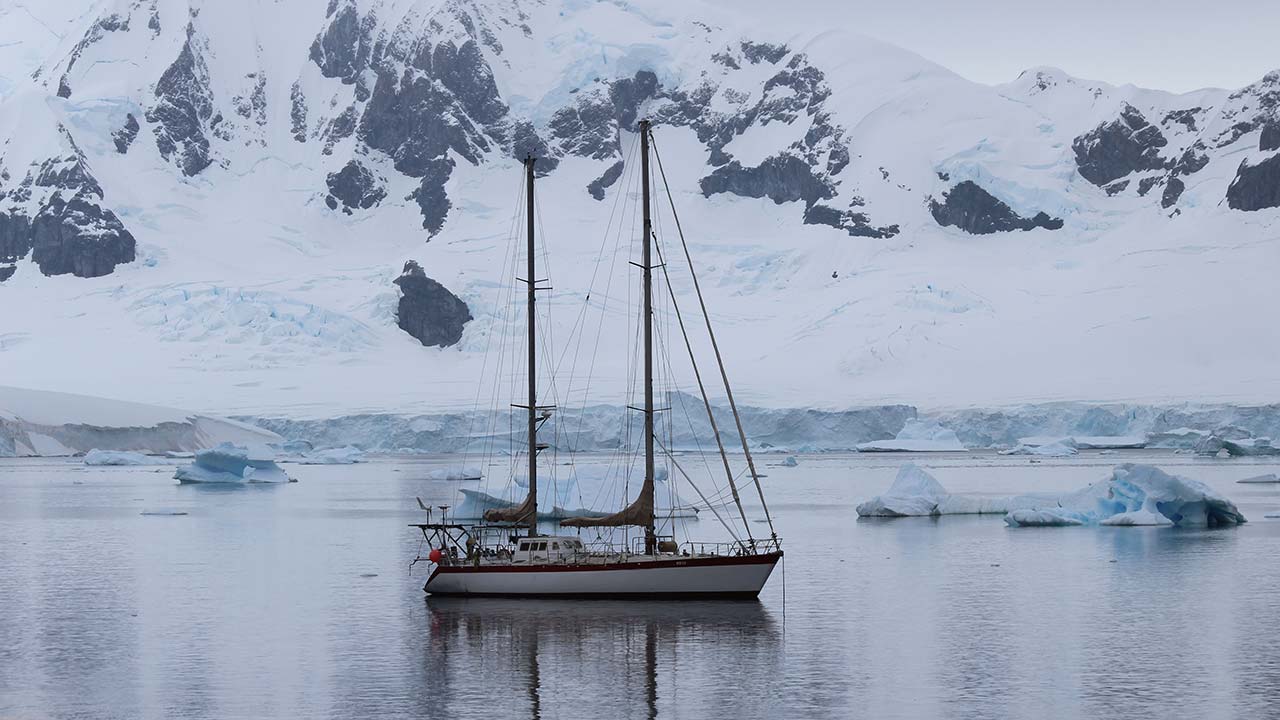
By DAN Boater
BOATING SAFETY | Dec 1, 2018
Temperatures may be dropping, but who says you have to put your boat in storage until the mercury rises again? Cold weather boating can be exciting and invigorating, but it also presents risks. Here’s what you should know before casting off in the cold…
Cooler temperatures in late fall, winter, and early spring can be ideal for boating. There’s seasonal foliage to ooh and ahh over, and fewer boats on the water means less “traffic” to navigate. Wildlife encounters are also more abundant—so don’t forget to pack a camera!
But a chill in the air brings special risks. In fact, while more boating accidents occur during the warmer months, a higher percentage are fatal during cold weather months because survival rates drop drastically with the combination of cold air and frigid water temperatures. To stay safe, Mike Folkerts, a Coast Guard Boating Safety Specialist based in Juneau, Alaska, recommends you take the extra precautions listed below.
Do this before heading out and continue to monitor it round-the-clock. Mother Nature can be fickle, and while your day may start out sunny, a sudden cold rain could soak you and bring on hypothermia almost as quickly as a dunking. Also know the capabilities of your vessel and all who are aboard, as well as what types of sea conditions it/they can handle safely. At the first hint of bad weather, evaluate whether it’s time to return to shore.
And follow it to the letter! A good float plan will list the names of every passenger aboard, your destination, departure/arrival times, a description of your boat and emergency contact information. Leave this information with a responsible family member or friend, and promise to check in with them as soon as you get back to shore. This way, they’ll know to call for help if you’re overdue.
Life vests should be worn year-round, but they are especially critical in cold weather. Not only will they provide sufficient buoyancy to keep your head above water if you happen to fall overboard, they also hold heat into the core areas of your body, thus increasing the odds of your survival in cold water by hours.
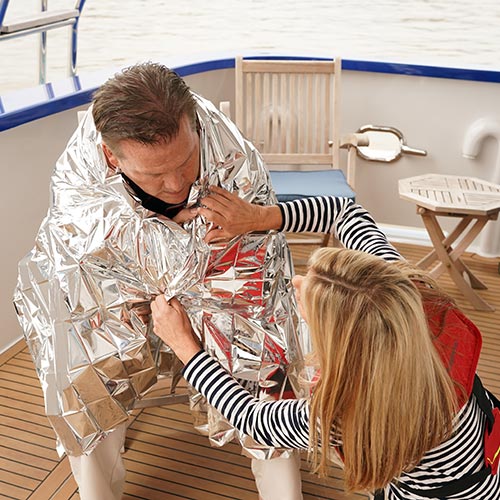
Studies show most people aren’t prepared for accidental immersion in water by already having a life vest on. They figure, “If worse comes to worse, I’ll grab it and put it on the water.” Truth is, such a maneuver is difficult enough to accomplish in calm and warm water—and in cold water, it’s nearly impossible. Worse, doing so will waste a lot of energy and burn a ton of calories, thus decreasing your chances of survival. Wearing a search and rescue (SAR) life jacket at all times is your safest bet, since it has a whistle, SOLAS reflective tape, and pockets for storing your EPIRB, handheld VHF, a signal mirror, and more.
Make sure you have a well-stocked first aid kit on board. Also pack a batch of emergency thermal blankets (aka space blankets). These are inexpensive, lightweight and easy to stow. If you have someone on board suffering from hypothermia symptoms, lay them down and wrap them in one of these—foil side facing in—until you can get them to safety.
If you take an unexpected tumble overboard, you want to be able to get back on your boat as quickly as possible, and here’s why: When immersed in cold water 50 degrees or less, after that first gasp, you immediately start hyperventilating. Your heart rate will accelerate, and panic will set in. This initial phase is known as "cold shock". Within the first 10 minutes, you’ll still have the ability to use your hands, arms and legs but will quickly lose feeling and dexterity, which will hamper your ability to self-rescue or signal for help. After an hour or so, your core temperature starts to cool, and hypothermia will likely begin to set in.
Always pack supplies to sustain you in case of emergencies like this—blankets, food, water, warm clothes, and communication location devices—VHF radio, GPS, and an emergency position indicating radio beacon (EPIRB), or personal locator beacon (PLB). And before you leave shore, make sure everyone on board knows the exact location of the ladder, the throwable life preserver and the VHF radio—as well as how to use these safety devices.
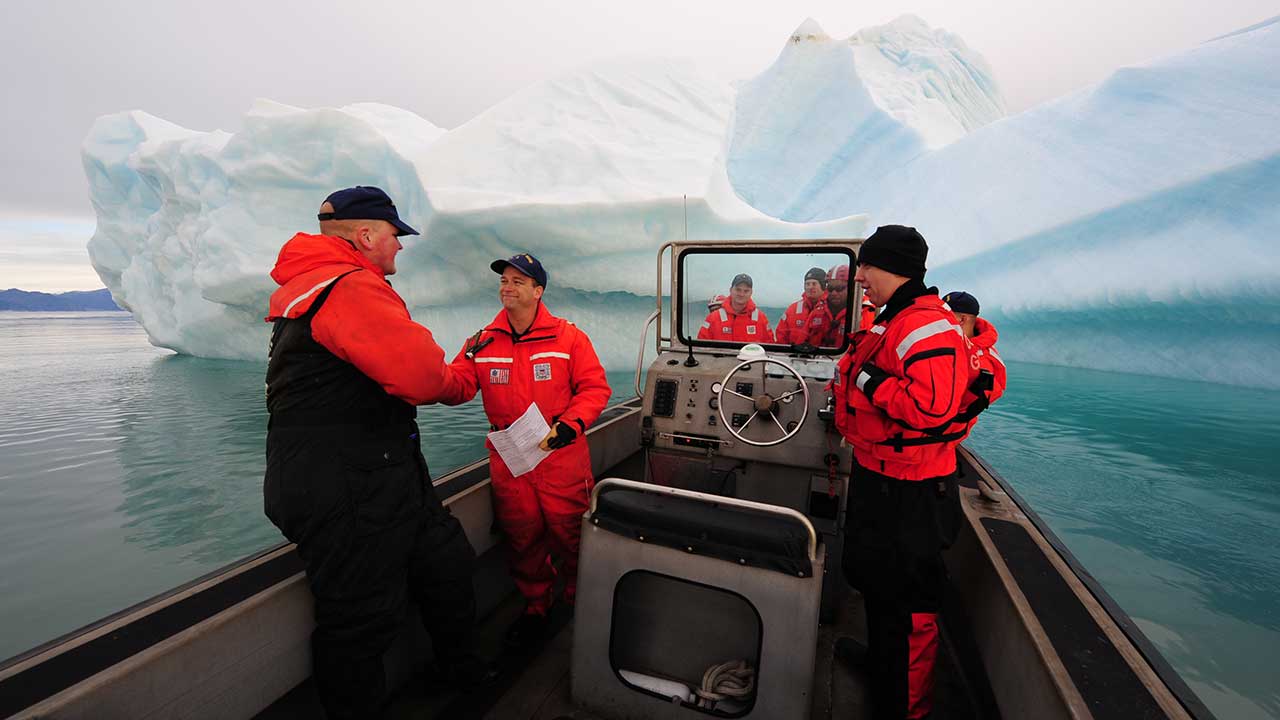
Dress for the water temperature, not the weather. If you’re underdressed in cold air, wind rapidly sucks away body heat. In fact, hypothermia can sneak up on you even if the air temperature is in the 60s or warmer. What’s more, ocean sprays or an unexpected breaking wave that gets you wet can zap heat away from your body 25 times faster than air at the same temperature.
The trick to protecting yourself from heat loss is wearing multiple layers. Start with a moisture-wicking layer next to the skin. Merino wool works best, absorbing up to 30% of its weight in water while still maintaining its insulating value. Synthetic fabrics such as polyester, nylon, and polypropylene are also good, since these don’t absorb water and move moisture from your skin to outer layers. But cotton, while comfy, is not recommended because it not only absorbs water, it also dries slowly and loses its insulating value when wet.
Over the base layer, you want to wear one or more garments to hold in your body heat. This insulating layer can be synthetic or wool fabric pieces of varying weight and thickness. Neoprene, a rubber-like material, is also a good choice, as it provides excellent insulation.
Your outer layer should be wind- and waterproof yet able to allow perspiration moisture to pass out of the garment, keeping the inner layers drier. And don’t forget your extremities! As much as 10% percent of heat loss occurs through your head, so wear a waterproof hat or hood. Also, a good pair of gloves and boots will provide increased grip and traction while they insulate and keep your fingers and toes toasty.
And remember to bring along some extra clothes, in case you or your passengers need to make a quick change.
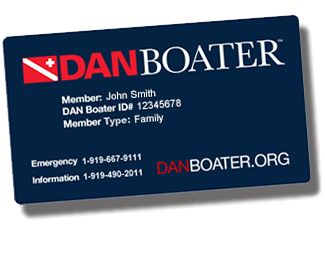
Your Backup Plan for Cold Water Accidents.
Should you encounter an emergency while boating in cold weather, you’re in good hands with DAN Boater. Annual membership offers peace-of-mind emergency services — such as medical evacuation to the closest hospital, repatriation home for better-quality treatment, and help with search and rescue expenses.
Cold weather sailing can make you a bit, well, klutzy. When your feet are cold, it’s harder to maintain balance, and stiff fingers make it harder to tie knots, open latches or push buttons on electronic devices. Bundling up also makes you bulkier and less nimble than normal. So, when walking around on deck, or along the rails of your vessel, always keep one hand on a grab rail for extra support.
Many of us believe that having a couple of drinks makes us feel warmer. In reality, the opposite is true. Research at the University of Iowa reveals that you lose heat faster with alcohol in your blood. In fact, sipping on just one cocktail can trigger the process that results in a lowered core body temperature. Another study conducted by the Army Research Institute of Environmental Medicine shows that drinking alcohol in chilly weather also reduces the body’s ability and tendency to shiver, taking away yet another method your body uses to help keep warm when it’s cold. A better idea? Stay hydrated by drinking lots of water, and save the celebratory cocktails for the dock.
A person overboard situation is dangerous enough but many boaters -- especially those who usually limit their boating to warm weather -- don't fully appreciate just how quickly a plunge into cold water can turn deadly. A complete explanation of what happens in cold water immersion situations and advice on treating hypothermia is beyond the scope of this particular post, but here are the three most important things every boater needs to know:
An initial gasp and hyperventilation is unavoidable. You have about 1 minute to get your breathing (and panic) under control. Your lifejacket is vital at this stage to help keep you afloat and breathing.
You have approximately 10 minutes for meaningful activity. Use it to assess your situation and prioritize and perform the most important functions first:
You have roughly one hour of useful consciousness. Focus on slowing your heat loss and calling for help.
Infographic: A Cold Water Immersion Event Is A Fight for Survival
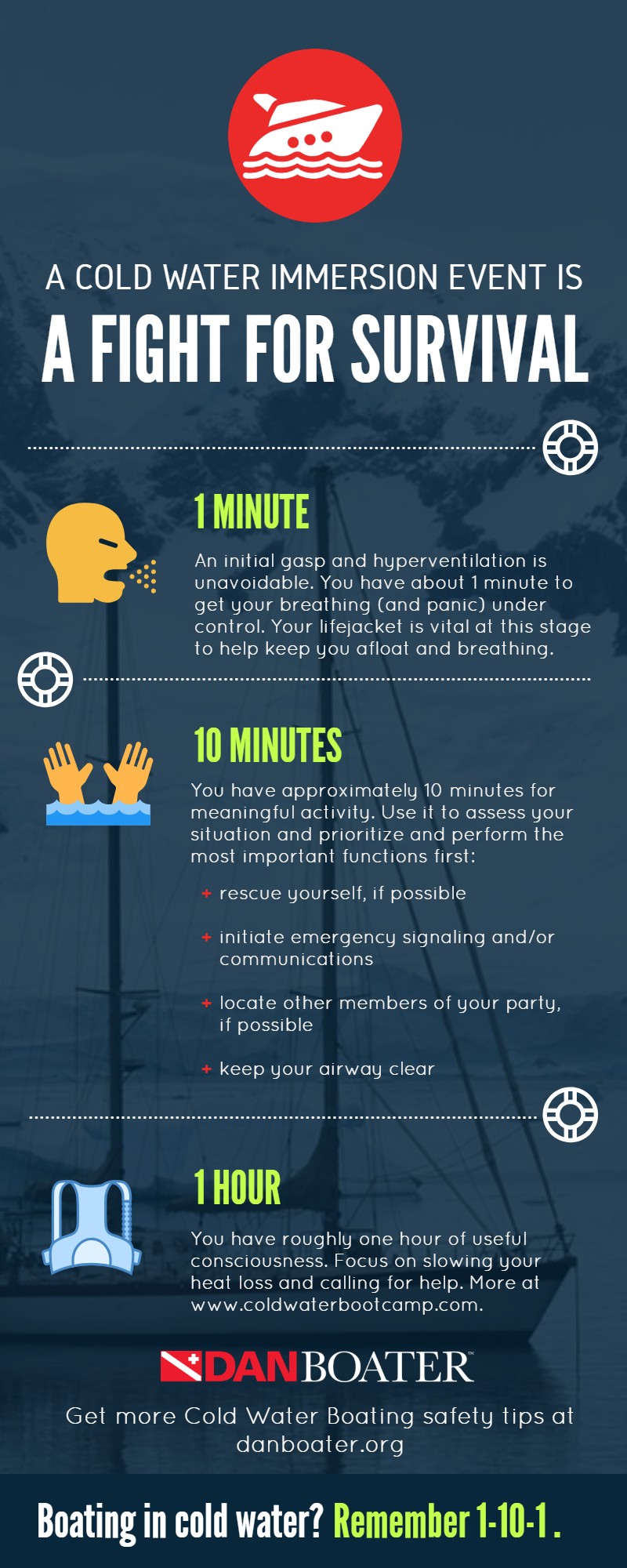
Share this infographic on your site! Copy and paste the code below:
Video courtesy of America's Boating Channel
MORE FROM
SAFE PASSAGE
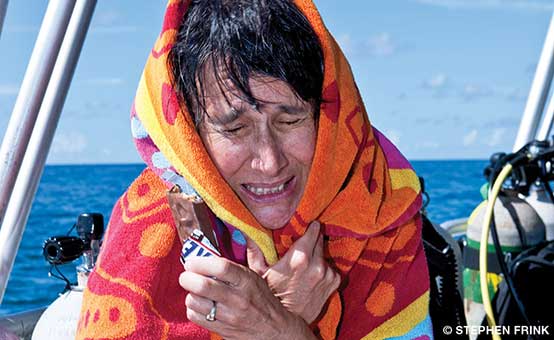
TRAVEL HEALTH | Nov 19, 2015
Field Management of Hypothermia
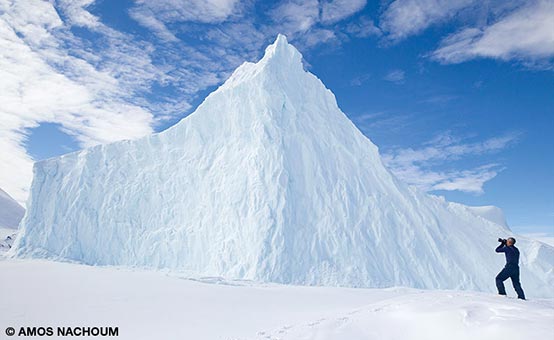
DESTINATIONS | Oct 1, 2015
Bipolar: The High Arctic and Antarctica